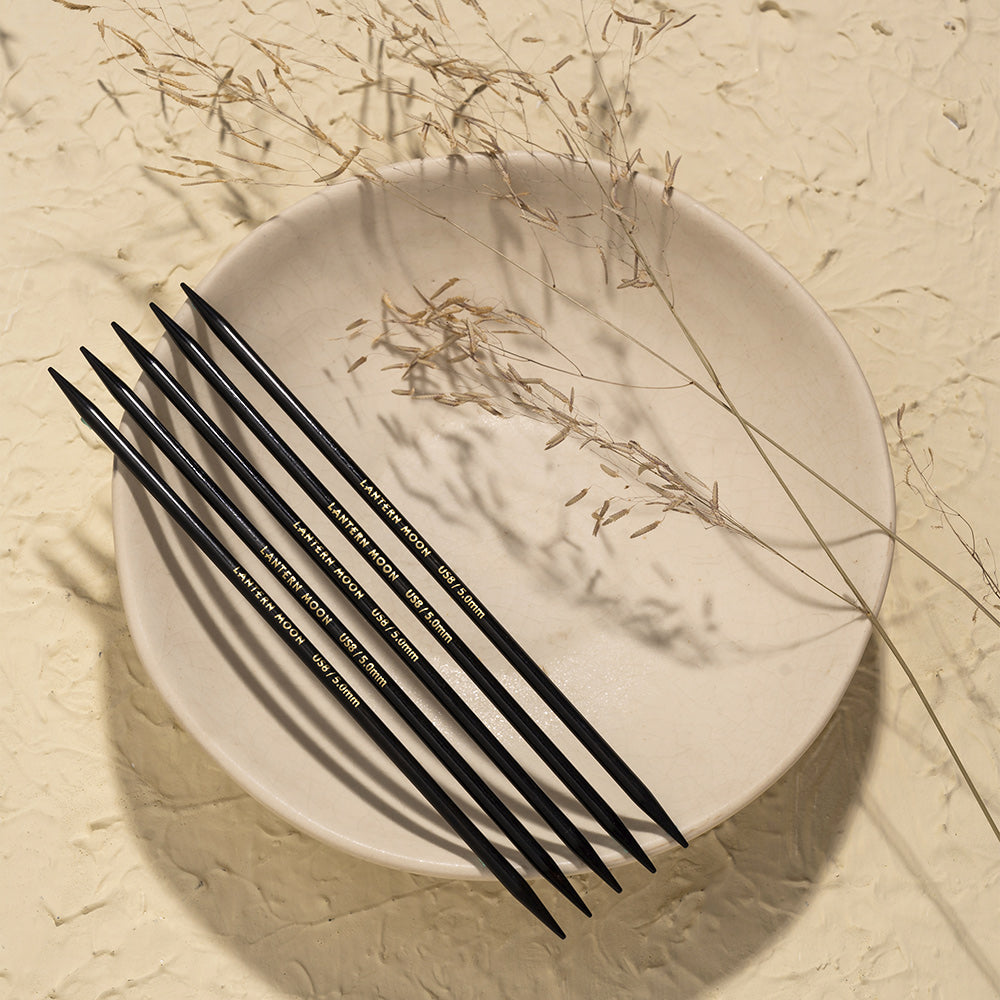
Knitting with Double-Pointed Needles (DPNs) is a secret for seamless creation. You can often feel adventurous because you hold precision in your palm. These five small sets of needles open up many creative possibilities for experienced and beginner alike. However, most knitters prefer to stay away from it due to too many needles.
Let's check out the top mistakes to avoid when working with these knitting needles and how to fix those perfectly.
Highlights
- What are double-pointed knitting needles?
- What are the uses of DPN?
- Top 8 challenges with DPNs and how to overcome them
What are double-pointed knitting needles?
Double-pointed needles are short and available in a set of 5, with points on both ends. These beautiful needles allow you to knit seamlessly in round and small circumference projects. DPN doesn't have a stopper or cables at the end, so that you can knit from both sides.
What are the uses of DPN?
Double-pointed needles are perfect for knitting small projects such as:
- Socks
- Hats
- Mittens
- Sleeves
- Cuffs
Top 8 challenges with DPNs and how to overcome them

1. Selecting the wrong needle size or material
The issue you are likely to face with DPNs or any other needles is the size and material. From smooth ebony wooden needles to stainless steel, these are available in various lengths.
- Keep in mind that when you work with a large needle, you get loose or uneven stitches, while you get tight stitches with a small needle. Hence, always swatch and check the pattern recommendation.
- How you control the yarn and how comfortable you are with your needles depend on your choice. Wood or bamboo offer a gentle grip to beginners, while steel needles allow the yarn to glide faster, hence, great for experienced knitters.
You May Also Like: 10 TRICKS & TIPS TO KNIT SMOOTHLY WITH DOUBLE-POINTED NEEDLES
2. Twisting the join during the cast-on
This situation happens when you divide the stitches among three or four double-pointed knitting needles. Beginners feel frustrated after completing several knitting rounds.
Before joining, consider these steps:
- Lay your needles flat on the table and ensure the cast-on stitches face inward direction.
- Join all stitches carefully and make sure no twist shows in the circle.
- Start your first round slowly, and once you are comfortable, the stitches flow naturally.
3. Dropping of stitches between needles
It means you accidentally lose the current stitches from the needles, which can be seen and distort the fabric shape.
Here are various ways you can prevent it:
- Firstly, tug the two stitches tightly on each needle.
- Rotate the stitches occasionally after completing a few rounds, redistributing them so that each new needle begins in a different section of your work.
- Choose a DPN with a smooth yet slightly grippy finish to prevent stitches from slipping.
4. It's tricky to handle too many needles
These small but mighty tools offer many possibilities to knit seamlessly. However, beginners often juggle with these five smooth needle tips.
Check out some of the suggestions:
- Think of three or four needles as a stitch holder.
- The fifth one is used for knitting.
- Just focus on the active stitches, not on the resting ones.
5. Losing track at the beginning of the round
As you know, DPN projects are small and continuous in a circle, so it's easy to lose track or forget the beginning of a new round. This will make your pattern and stitch count uneven.
Avoid confusion with these steps:
- Place a stitch marker or a different yarn color at the beginning and end of the stitches.
- Make sure you keep the pattern along with you, and note down when to increase or decrease.
6. Ignoring hand tension and finger position
Wrong finger positioning can create uneven tension or finger fatigue. With double-pointed needles, you need gentle control.
Follow these suggestions:
- Hold the DPN gently, not too tightly; otherwise, it will cause wrist fatigue.
- Adjust your hand; instead of forcing tension, let the yarn flow naturally with small finger movements.
- During long knitting sessions, rest your hands regularly to prevent wrist soreness.
7. Not swatching in the round
Do you know the gauge of a circular knitting needle or double-pointed knitting needle projects differs from flat knitting? Many knitters forget to make a swatch in the round, making the knitted fabric unfit to wear.
Let's test the gauge correctly:
- Knit a swatch with the same size and material of DPNs that you would be using in your real project.
- Now, measure the stitches per inch.
- You can adjust the needle size, as per the requirements.
You May Also Like: EASY KNITTING PROJECTS TO MAKE WITH DOUBLE-POINTED NEEDLES
8. Avoiding practices with the simple projects
Many knitters, especially beginners, avoid practice with DPN, but these needles require coordination. Jumping straight to the complex project might frustrate you in the end.
Try these beginner-level projects:
- Basic socks or mittens
- Mini hats or cuffs
- Baby Booties
To sum up
Mastering circular projects with double-pointed needles is tricky; however, you face most challenges like wrong needle size, forgetting the stitch count, or avoiding practice. However, Lantern Moon’s double-pointed needles combine smooth performance with luxurious comfort, helping knitters overcome common challenges with ease and confidence.
So go round in style with double pointed needles, an ideal companion for knitters who love detail.
If you are interested in MASTERING SOCK KNITTING STITCHES WITH DOUBLE POINTED NEEDLES (DPNS), just click the link and make beautiful socks for your loved ones.
